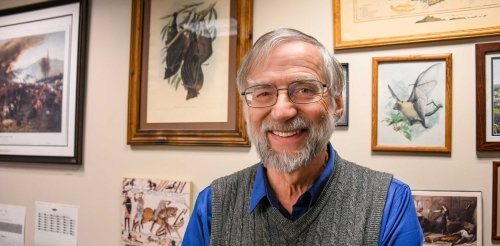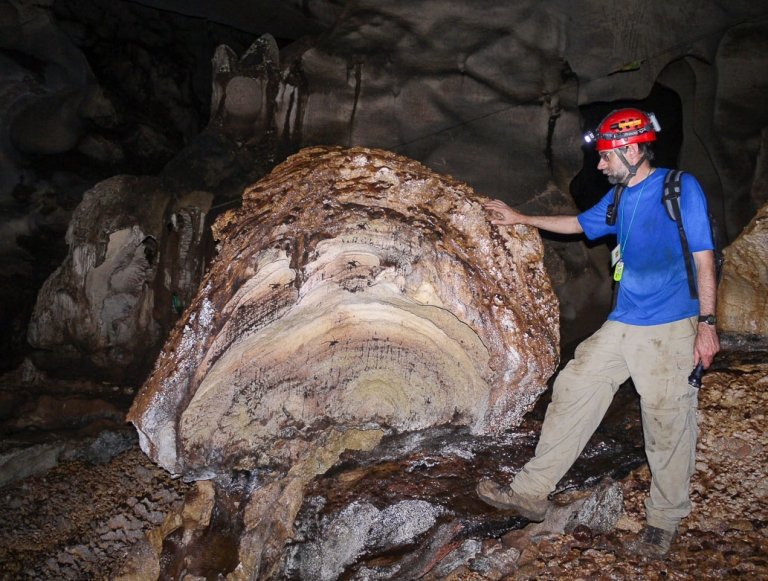Back to the Batcave
A professor’s work in the caves of Borneo offers unique insights into climate change.

Caves are forbidding places for most people. They’re the lairs of wild animals or places to get lost. But Don McFarlane doesn’t feel that way. For him, caves are some of the most important places in the world.
The Kenneth S. Pitzer Professor of Biology and Environmental Science, McFarlane wants us to think of caves as archives in stone. They preserve a powerful record of the world’s climate history.
“Caves are amazing natural repositories of all kinds of stuff. I’ve been interested in them ever since I was a boy,” he said. Growing up in the south of England, he said he didn’t hesitate to “look in caves whenver I could.”
A leading scholar in bio-geomorphology and bio-microclimate studies of caves, McFarlane studies caves to gauge their impact on forests and farmlands. Are caves good sources of nutrients (especially thanks to bats, which bring material from miles away), or do they soak up nutrients before they can benefit the surrounding area?
"Environmental change is inevitable, and caves provide persuasive evidence of that. The real concern is how fast the changes are taking place now."
–Professor Don McFarlane
That’s a key question in his work, which was suspended in 2020 because of the pandemic. Last summer, after a three-year halt, McFarlane returned to the Mulu caves of Borneo, where he and his colleagues are conducting three-dimensional laser scanning to reconstruct the caves’ systems and better understand how nutrients move through them.
McFarlane’s research has also given him a unique perspective on the issue of climate change.
Environmental change is inevitable, he said, and caves provide persuasive evidence of that. Take the Dream Cave in Derbyshire, U.K., for example. It contains fossils of woolly rhinoceroses and hippopotami — two animals that lived in very different ecosystems at different times. That alone, McFarlane said, “shows us how dramatically the environment of one place can change over time.”
That is why McFarlane doesn’t believe climate change in itself is a problem.
“It’s how rapidly these changes are taking place that’s the real concern,” he explained.
“The changes that enabled woolly rhinos to live where hippos did took place over tens of thousands of years. We’re not talking in those terms anymore. When we talk about something like rising sea levels, we’re talking about a short amount of time. There’s so much development along coastal regions that even small changes are economically disastrous. You’re seeing this now.”

McFarlane also sees alarming signs of rapid change in Costa Rica, where he takes students to Pitzer’s Firestone Center for Restoration Ecology to study biodiversity. He said the wilderness there was relatively untouched until the 1950s, when it was heavily deforested for a homesteading program. Students see for themselves how surges in human activity are imperiling many habitats and ecosystems.
If there’s a positive in this, McFarlane said there’s a special opportunity for students who wish to become scientists.
“There are certainly bright points in the situation with climate change, especially for a young scientist,” he said. “I tell them they have a chance to study closely how climate change is impacting places and then use that information to determine how to physically protect affected species. There won’t be any shortage of scientific opportunities for making positive improvements. There will be plenty of meaningful work waiting for them after graduation.”